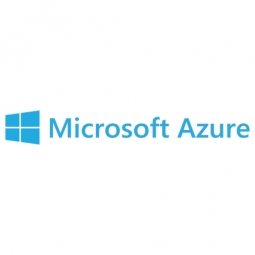
- Networks & Connectivity - Radio Access Network
- Construction & Infrastructure
- Field Services
Based in Bolton, England, Ascribe is a leading provider of business intelligence (BI) and clinically focused IT solutions and services for the healthcare industry. Ascribe estimates that 82 percent of National Health Service (NHS) trusts in the United Kingdom use its products. With access to large volumes of data maintained by the trusts, the company wanted a BI solution that would help healthcare providers detect, predict, and respond more quickly to outbreaks of infectious disease and other health threats. Healthcare analysts typically work from data collected and coded when patients receive treatment in clinics and hospitals. “By the time they get that information it’s usually out-of-date,” says Paul Henderson, Business Intelligence Division Head at Ascribe. “The data has already been coded and stored in a record-keeping system, or it’s been collected from a hospital workflow, and that doesn’t always happen in real time.” In addition, huge volumes of potentially useful data existed in text files from sources such as unscheduled visits to emergency rooms, school attendance logs, and retail drug sales. The Internet offered another trove of untapped information including clickstream analysis and social media such as Twitter. “If you think about each clinician who struggles with getting timely, accurate data, and you compound it on a national scale, then it becomes an immense challenge,” says Henderson. “You have lots of small pieces of data coming in from multiple places, and it can be very difficult to aggregate and interpret.”
Ascribe had previously worked on a solution to support the analysis of national emergency care attendance. The system was designed to monitor the daily number of people who visited emergency departments in the UK and raise an alarm when it identified unusual levels of activity such as a potential outbreak of an infectious disease. However, it was difficult to collect data from a rapidly growing number of healthcare providers, including mobile clinicians. In addition, clinicians were unable to use the exploding volume of unstructured data from patient case notes and social media feeds. “The processing power you would need to handle all of that information is beyond the capability of most organizations,” says Henderson. “A hospital can’t just stand up a server farm to process millions of case notes from an emergency care system in addition to other data.” To solve these problems, Ascribe decided to design a proof of concept that would create a standardized approach to working with healthcare data. The company asked Leeds Teaching Hospitals, one of the biggest NHS trusts in the UK, to participate in the project. Leeds can generate up to half a million structured records each year in its Emergency Department system. The hospital also generates approximately 1 million unstructured case files each month.
Ascribe wanted to create not just a proof-of-concept BI solution for monitoring infectious disease on the national level, but also a tool that could be used to improve operations for local care providers. “Our goal was to find a way to make data flow more quickly in near-real time,” says Henderson. “We also wanted to augment clinically coded data with data harvested from case notes.” The company wanted to create a national knowledge base that both analysts following disease outbreaks and local clinicians could use to improve healthcare. Ascribe needed a highly scalable, end-to-end solution that could work with multiple data types and sources, as well as provide self-service BI tools for users.
Microsoft Azure HDInsight cluster.
Ascribe decided to implement a hybrid cloud solution based on Microsoft SQL Server 2012 Enterprise software running on-premises and Windows Azure HDInsight Service running on the Windows Azure platform. Ascribe planned to take advantage of BI tools built into SQL Server 2012, as well as multiple other products and services. The company chose Microsoft both for the capabilities of individual products and because it offered a streamlined, end-to-end solution that it could implement quickly and easily. “We were dealing with a complicated business process with lots of moving parts, all of which could be automated by a seamless Microsoft stack,” says Henderson. “We didn’t want to buy products from different vendors and try to make them work together. Microsoft figures that out for you.” Ascribe began working on the proof of concept (POC) in November 2012 and completed the project six weeks later in mid-December. Leeds then ran a pilot project with the solution, which finished in September 2013. The company created an on-premises data mart with SQL Server 2012 running on the Windows Server 2008 R2 Enterprise operating system that included its own repository of clinical data and case files from Leeds Hospital. In the POC, Ascribe and Microsoft partner Two10Degrees, a company that specializes in Windows Azure technology, filtered the records to remove names and other identifying information before sending the data to the Windows Azure platform. In the pilot project, Ascribe ran six years’ worth of data that recorded millions of hospital visits without filtering out patient names. As a result, it was able to more precisely track patterns such as repeated hospital admissions of specific patients. The company set up a data mart on HDInsight Service that includes a natural-language processing engine created by Two10Degrees. HDInsight Service is a Microsoft Big Data offering that provides an Apache-based Hadoop distribution. HDInsight Service is a platform designed to process large volumes of structured and unstructured data, while also integrating with Microsoft BI tools and accessing a wide array of public and organizational data sources. Ascribe worked with Two10Degrees to map unstructured text to a clinical taxonomy. Next, Ascribe looked at patterns in the data to identify potential outbreaks of infectious disease as well as trends that are typically more difficult to analyze, such as alcohol-related visits to the emergency room and injuries from accidents in the home.
Leeds is using the solution to improve community healthcare in multiple ways. For example, clinicians wanted to take a closer look at the 300 additional alcohol-related admissions to emergency care each week that coincided with university term breaks. The hospital discovered that while there were many incidents stemming from pubs and areas frequented by students, the larger number of emergency room attendees during any time period were former inmates of a local prison. As a result users of this new BI technology can use the data to make evidence based decisions on where to invest resources to avoid emergency room visits, such as community alcoholawareness interventions. Ascribe also designed several applications that run on Windows 8 tablets, including an app for monitoring disease outbreaks. Active tiles on the Windows 8 desktop display real-time information. For example, users can look at the tile for the app used to monitor disease outbreaks and immediately see if the system has sent an alert. The solution provides self-service BI tools that clinicians can easily use without requiring technical training or IT assistance. Tapping on the tile launches a Microsoft SharePoint 2012 dashboard, which includes Power View, an interactive data visualization feature. Clinicians can work with the tool to quickly correlate multiple types of information, such as population density, family size, and the availability of local healthcare services. In addition, the Windows 8 app integrates with Bing Maps to show the geographic distribution of reported illnesses. Clinicians can touch the map to drill down to detailed information on each patient diagnosed. If the clinician needs to collaborate with peers, the solution also incorporates Microsoft Lync technology for secure instant messaging and conference calls. The solution integrates with Microsoft Office 2013 as well, which provides multiple ways to share information through documents, spreadsheets, and email. For local healthcare providers interested in improving efficiency, the company created cubes in SQL Server 2012 Analysis Services that aggregate data from clinical databases, case files, and social feeds. Working with Microsoft SQL Server 2012 PowerPivot for Excel, users can quickly analyze large data sets and predict trends such as fluctuating ambient temperatures that correlated with an increase in injuries caused by people falling. In addition to the analytics app, the solution includes Ascribe Symphony software, a rich, clinical solution that helps clinicians deliver high-quality healthcare services in the high-pressure emergency environment. Used worldwide, Symphony software captures data such as patients’ location and condition. The information collected, which Customer Story Customer Story.html[4/17/2015 9:38:45 AM] includes structured data such as selected treatment types as well as unstructured, textual case notes, can then be extracted and analyzed with the new BI tools.

Case Study missing?
Start adding your own!
Register with your work email and create a new case study profile for your business.
Related Case Studies.









